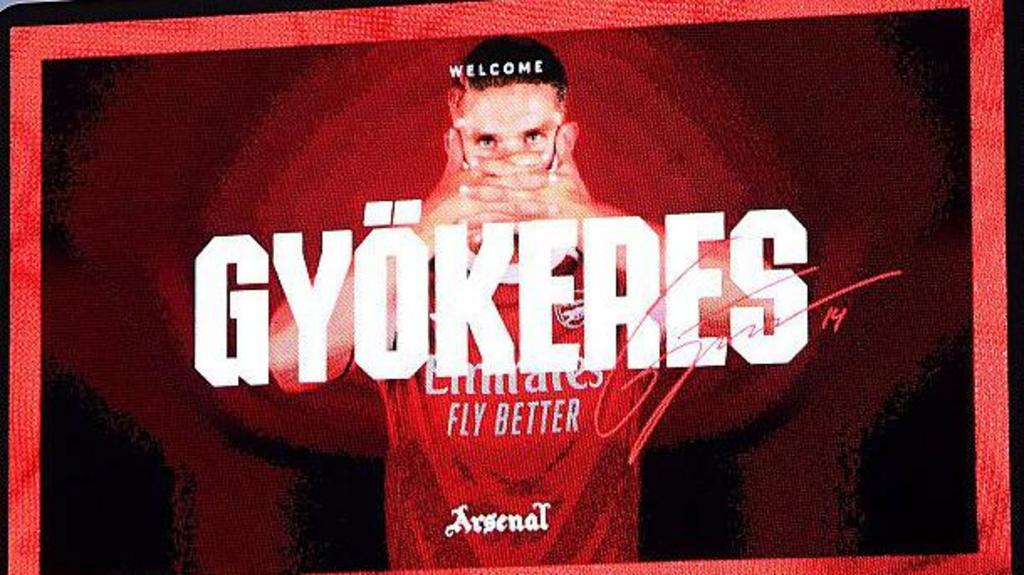Last season, Arsenal appeared to be in dire need of a prolific goalscorer, and the acquisition of Viktor Gyokeres may address that very issue.
While the Gunners boasted a tighter defense than Liverpool in 2024-25, Arne Slot’s team outscored them by 17 goals – a potentially decisive factor in the Premier League title race.
Gyokeres has ostensibly been brought in to remedy this goalscoring deficit, though the situation may be more multifaceted than it initially appears.
Upon analyzing the reasons behind Arsenal’s 69 goals compared to the champions’ 86, it becomes evident that their primary challenge wasn’t converting chances, but rather creating them…
Liverpool (13.3%) recorded a superior shot conversion rate to Arsenal (12.6%) last season, but this statistic can be misleading due to one key element: penalties.
Liverpool were awarded and converted a league-leading nine penalties, while Arsenal only managed a meager two.
Given that penalties were converted at a rate of 83%, compared to just 11% for non-penalty shots in the Premier League in 2024-25, each penalty won significantly skewed a team’s shot conversion rate as a true reflection of their finishing prowess.
When examining the ruthlessness of both teams from open play, Arsenal actually demonstrated (marginally) superior finishing…
While Liverpool’s nine penalties were substantial, 14 teams have been awarded more in a single season over the past decade – including Manchester United, who received a staggering 14 penalties in 38 games in 2019-20.
However, for a team of Arsenal’s caliber to win just two penalties is unusual. In the past 10 campaigns, teams finishing with 70+ points have won an average of five penalties, while champions have averaged eight.
Notably, the last team to accumulate so many points while winning so few penalties was Arsenal themselves in 2015-16, when they also finished as runners-up with just two penalties awarded. Conversely, champions Leicester were awarded 13.
Those seven additional penalties last season had a notable impact on the title race, with Liverpool’s nine spot-kicks earning them an extra 11 points over the course of the campaign.
Since Arsenal’s two penalties both came in a 5-2 victory at West Ham in November, they ultimately contributed no additional points to the Gunners’ tally.
Penalties aside, the primary reason for Arsenal’s lower goal tally compared to Liverpool lies in their relative lack of chance creation!
Over 38 games, Liverpool took 95 more non-penalty shots than the Gunners… an average of 2.5 more per game.
Had Mikel Arteta’s side taken the same number of non-penalty shots as the champions and maintained their conversion rate (12.3%), they would have scored an additional 12 goals, highlighting Arsenal’s main issue: the inability to capitalize on chances they didn’t create.
Liverpool not only created more shots than Arsenal last season, but also higher-quality ones, with only Brentford generating higher-quality chances on average in terms of expected goals per shot (excluding penalties).
This suggests that Liverpool created chances last season that have historically been converted in the Premier League 12% of the time, compared to Arsenal’s 11%.
While a 1% difference may seem insignificant, considering Arsenal took 544 non-penalty shots last season, creating chances of the same quality as the champions would have resulted in an additional five goals (1% of 544).
Attentive readers will notice that the goals Arsenal ‘didn’t score’ due to the aforementioned reasons total 24, while in reality, they scored 17 fewer goals than Liverpool.
This discrepancy arises because, when accounting for shot quality, Arsenal were not just slightly better finishers than the champions last season, but significantly so, outperforming their non-penalty xG by seven goals compared to Liverpool’s meager 0.5.
In fact, despite the prevailing narrative surrounding Arsenal’s finishing last season, only Nottingham Forest and Wolves were more clinical in front of goal than the Gunners.
The challenge for Arteta’s side was that Liverpool created so many more, and higher-quality, chances that they didn’t need to be as clinical to secure the league title.
In summary, here are the factors contributing to Arsenal’s 17-goal deficit compared to Liverpool last season…
While Gyokeres’ ability to convert chances will undoubtedly benefit Arsenal, his primary contribution should be in addressing the Gunners’ core issue: a lack of chance creation.
Last season, he averaged 4.5 shots per 90 minutes in the Primeira Liga, significantly more than Gabriel Jesus (3.0) and Kai Havertz (2.6) averaged for Arsenal in the Premier League.
While the number of shots a striker takes is partially influenced by the service he receives from his teammates, it also reflects the options he provides through his movement and anticipation in and around the box.
Given that Gyokeres also ranked second for chances created from open play in the league (60) and won the most penalties (4), he is poised to play a crucial role in providing the ammunition necessary for the Gunners to mount a serious challenge for the Premier League title this season.
Listen to the latest Football Daily podcast
Get football news sent straight to your phone
Comments can not be loaded
To load Comments you need to enable JavaScript in your browser

